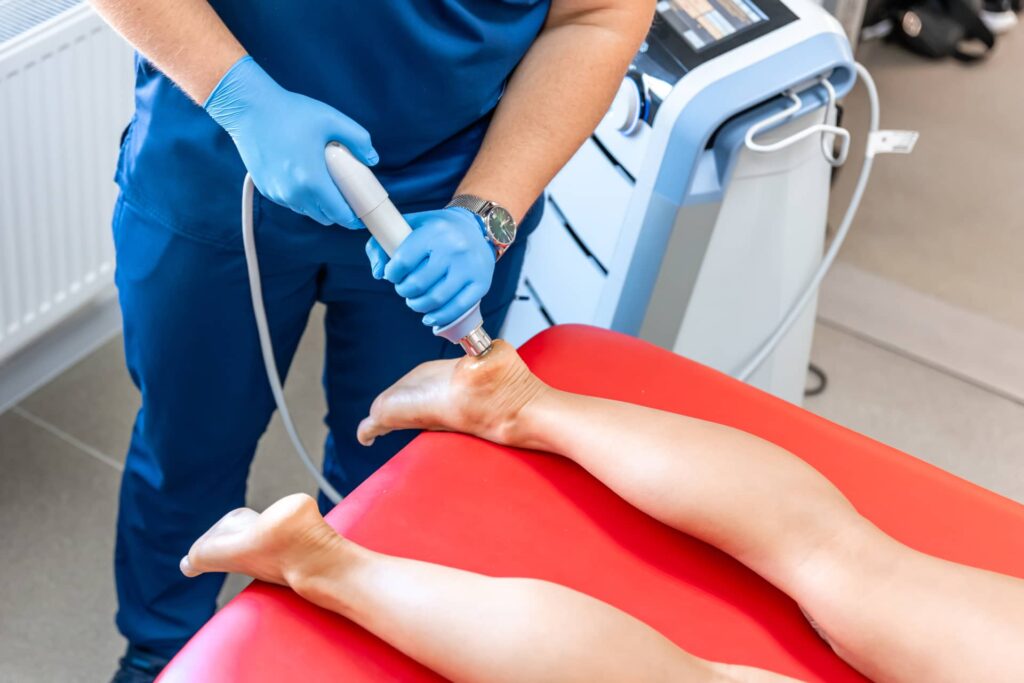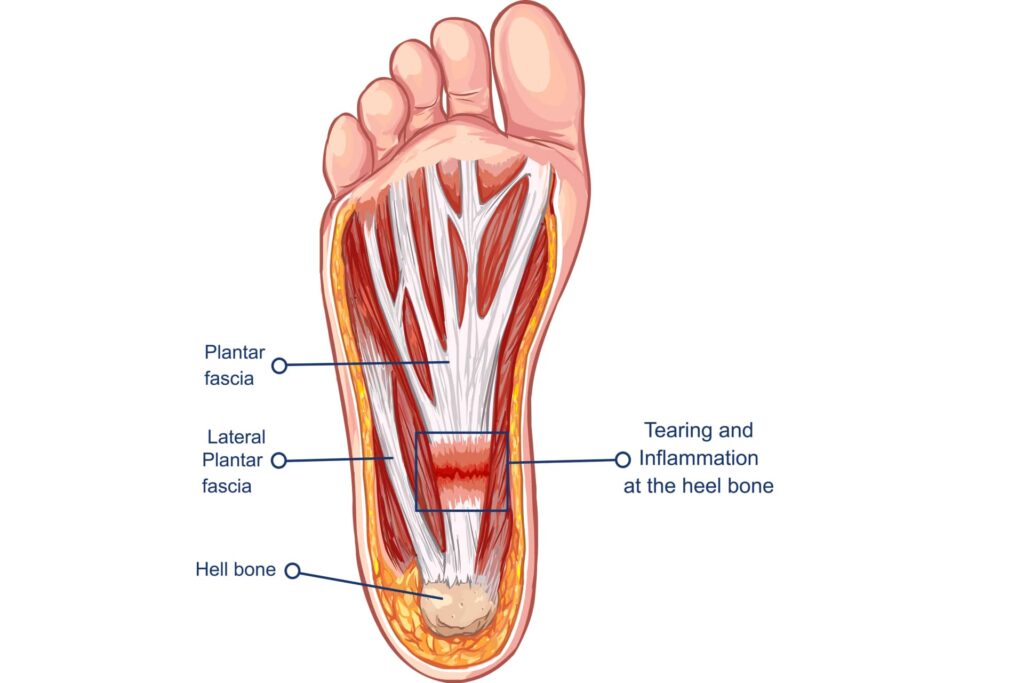If you’re suffering from significant heel pain, know you’re not alone. Plantar fasciitis, one of the most common causes of heel pain, affects more than 2 million people in the U.S. every year, and approximately 1 in 10 people will develop the condition in their lifetime. Understanding this condition, its causes, and treatments — including effective plantar fasciitis medical devices — play a crucial role in managing and alleviating its symptoms.
What is plantar fasciitis?
Plantar fasciitis manifests as inflammation of the plantar fascia — a long, thick band of tissue (known as a ligament) that lies just under the skin along the bottom of the foot. The plantar fascia connects the heel to the front of the foot and helps support the arch. Though typically strong enough to manage everyday activities and strains, overuse and other factors can put too much pressure on the ligament, causing inflammation, damage, and tears.
Symptoms & Risk Factors
Plantar fasciitis pain is often easy to differentiate from other foot pain, as it’s typically most acute when first getting out of bed in the morning or standing up after a long period of sitting. This is because most people’s feet end up in a relaxed position when sleeping or sitting, which causes the tendon to shorten and tighten — which then results in pain as the damaged and/or torn ligament is stretched out upon standing and walking.
The most common symptoms of plantar fasciitis include:
- Stabbing pain in or near the heel
- Pain in the arch of the foot
- Pain that worsens throughout the day
- Pain that lasts for months
- Pain is worse upon first waking or standing
Risk factors for plantar fasciitis include:
- New or increased activity
- Excessive foot pronation
- Repetitive high-impact activities like running or dancing
- Standing for long periods on hard surfaces
- Tight calf muscles
- Obesity
- Inadequate footwear
- Age (most common in adults aged 40 to 60).
How to Cure Plantar Fasciitis in One Week
We get asked this one a lot. Unfortunately, there is no quick fix to plantar fasciitis, and a complete resolution in a week might not be feasible. However, a combination of rest, proper footwear, targeted exercises, and medical devices can significantly alleviate symptoms within a week. Consistent adherence to the recommended treatments is vital for continuted improvement.
At-Home Plantar Fasciitis Treatments
More than 90% of people with plantar fasciitis will see relief from symptoms within 10 months of following nonsurgical treatment methods.
Common at-home treatments include:
- RICE (rest, ice, compression, elevation)
- Activity modification
- Pain relievers (ibuprofen and naproxen sodium)
- Stretching
Plantar Fasciitis Exercises & Physical Therapy
Your podiatrist may give you specific plantar fasciitis exercises to help stretch and strengthen the plantar fascia and surrounding muscles. Depending on the severity of your plantar fasciitis, your doctor might even prescribe physical therapy that will focus on your calf muscles, Achilles tendon, and plantar fascia, along with exercises to improve foot strength.

Best Shoes for Plantar Fasciitis
Choosing the right footwear is crucial to both plantar fasciitis prevention and managing associated pain. The best shoes for plantar fasciitis provide ample arch support, cushioning, and stability for the entire foot.
Plantar Fasciitis Braces, Night Splints & Boots
Devices like plantar fasciitis braces and night splints maintain a gentle stretch on the plantar fascia overnight, reducing morning pain. Boots designed to keep the foot at a specific angle can also aid in recovery.
Plantar Fasciitis Socks, Inserts & Medical Devices
Socks designed for plantar fasciitis often provide compression and arch support, aiding in pain relief. Medical devices like orthotic inserts or insoles and custom-made orthotics can redistribute pressure and provide personalized support, reducing strain on the plantar fascia.
Massage & KT Tape for Plantar Fasciitis
Massage therapy targeted at the foot, calf, and Achilles tendon can also help in managing symptoms. Additionally, using KT tape to support the arch and decrease tension on the plantar fascia can offer temporary relief.
Medical Procedures for Plantar Fasciitis
If more conservative at-home treatments and physical therapy don’t make a noticeable change in your condition after several months, your doctor may recommend:

- Steroid injections for temporary pain relief
- Ultrasound-guided PRP (platelet-rich plasma) injections
- Extracorporeal shock wave therapy
- Ultrasonic tissue repair
Gastrocnemius Recession (Plantar Fasciitis Surgery)
Surgery is considered a last resort for severe, unresponsive cases of plantar fasciitis and is relatively rare. Officially called a gastrocnemius recession or a gastrocnemius release, the goal of the surgery is to relieve tension on the ligament by lengthening the gastroc tendon (which is part of the Achilles tendon). Your podiatrist or orthopedic foot surgeon may recommend plantar fasciitis surgery if you have equinus contracture — inability to hold the foot at a 90-degree angle to the leg due to tight calf muscles and surrounding tendons — or if other treatments haven’t provided relief.
Plantar fasciitis can be debilitating, but with the right approach — including exercises, proper footwear, and specific plantar fasciitis medical devices — recovery is possible. While there’s no one-size-fits-all cure, a comprehensive treatment plan tailored to your needs, guided by your podiatrist, can significantly improve symptoms and quality of life. Remember, patience and consistency in adhering to your treatment plan are key to recovery.
If you’re suffering from plantar fasciitis and would like to talk about a personalized treatment plan, please contact us today.


1 Comment
This blog was very useful to understand the conditions. I think the patience,and consistency are very important to recover from any disease.